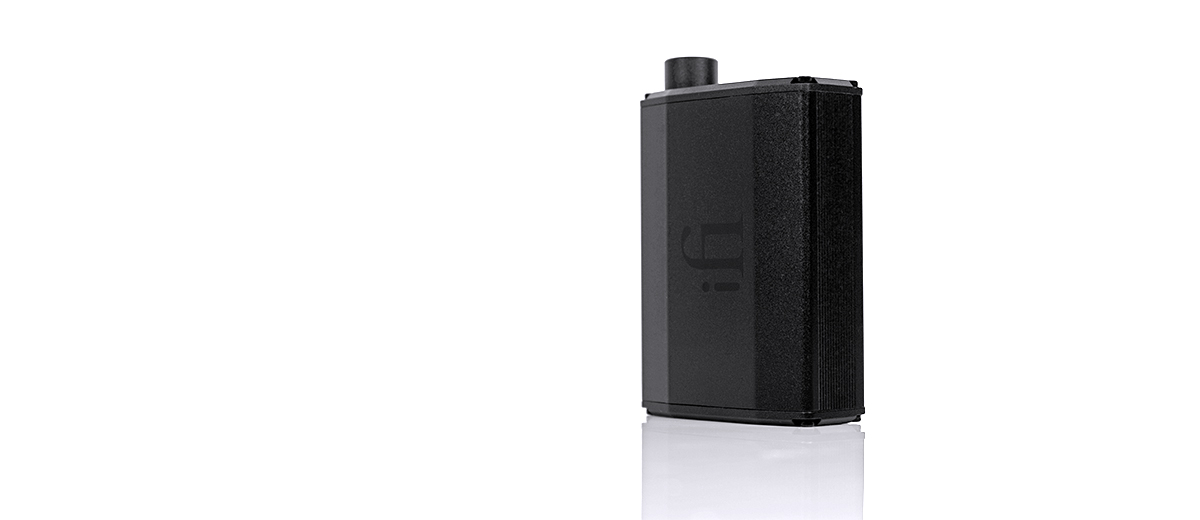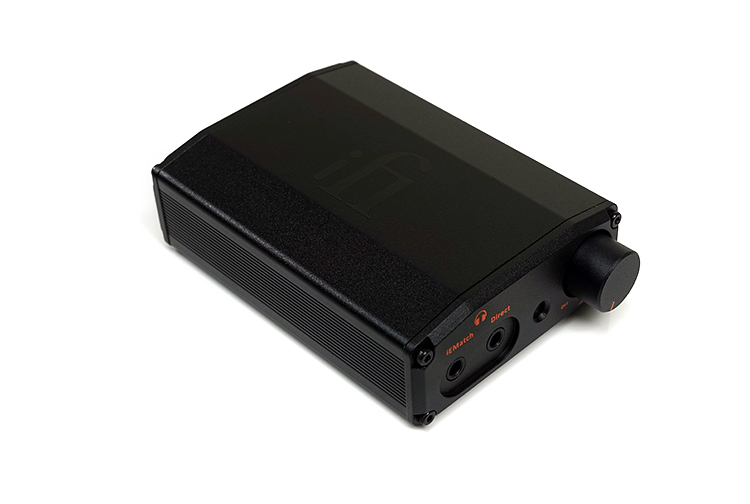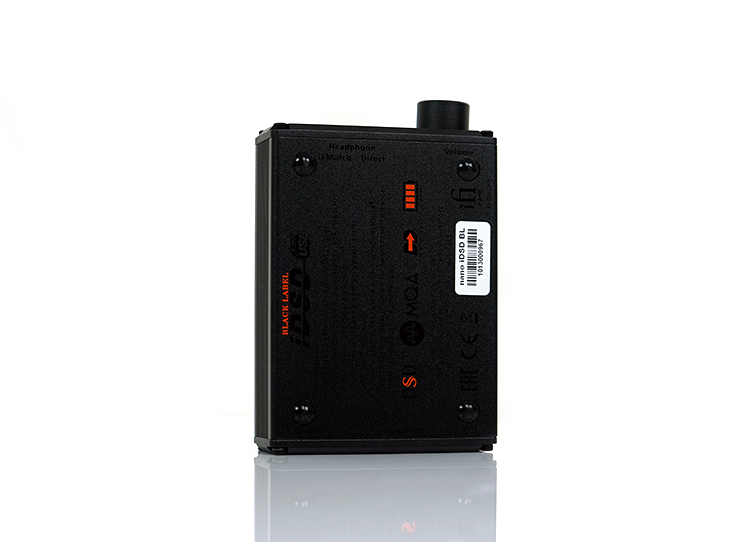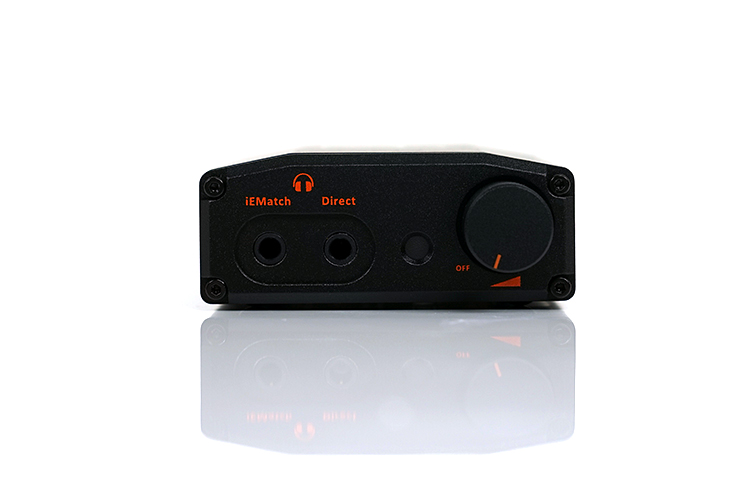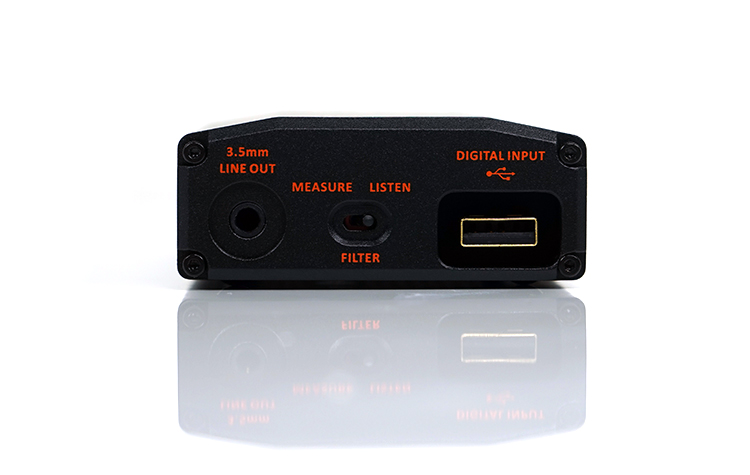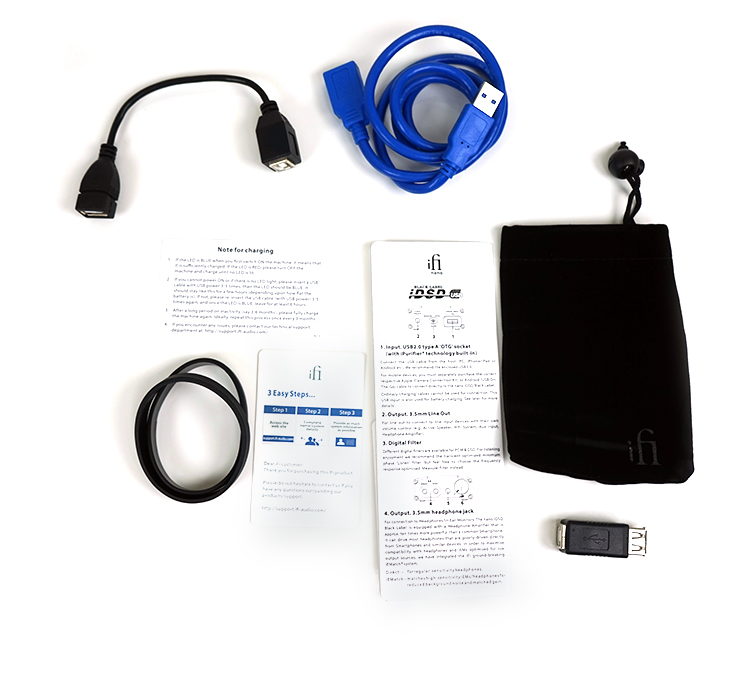The iFi Audio Nano iDSD Black Label is the next generation of micro portable DAC/Amp’s from the UK-based company and is priced at $199.
Disclaimer: The iFi Audio iDSD Black Label sent to us for the purposes of this review is a sample and does not have to be returned. Thank you to iFi Audio for giving us this opportunity.
You can read more about iFi Audio products we reviewed on Headfonics by clicking here.
The iFi Nano iDSD Black Label is the first iFi Audio product I have officially reviewed for Headfonics. Mike, Klaus and some freelancers from around the world have all covered them before and in some detail. You would have to be living under a rock in gadget and audio land if you have never come across the British-based iFi label.
Their marketing overdrive is hard to miss and they do hit all the right notes with some of those popular audio buzz words. If ever there is a company that can ride the wave of audio trends as quickly and handily as iFi I have yet to see it.
For proof, just check the back of any of their product boxes. The feature sets are long and very enticing.
Despite this late entry on my behalf, I know the brand pretty well actually and I do have an older Micro iDSD sitting on my desktop for a while now. The $199 Nano iDSD BL may be a rung lower than the Micro, but as mentioned, it is not short on features that’s for sure.
What Is The Pitch?
The Nano BL pitch is like a buffet of enticing tapas that you end up eating more from than any traditional 3-course meal can offer you. Where to start is pretty much where your eye drops and what interests you the most.
Price & Portability
At $199, for instance, it is almost, but not quite, budget level for a DAC/Amp and will appeal to those who want something more than just a phone or PC/Mac output performance levels. It is also pretty small enough to appeal to those who want something portable to take around with them but at the same time deliver solid and modern functionality to their desktop system.
Modern Listening Methods
It will appeal to those who love to stream with MQA compatibility as well as a very high level of decoding prowess including DSD256 and PCM up to 32/384 kHz. Its OTG functionality will also mean you can stream anywhere at any time if connected to a data-capable Android or iOS phone.
Matchability
It also looks a perfect pitch for those with a wide range of headphones and IEMs who need sensitivity as well as power. The combination of a dedicated IEMatch output for sensitive IEMs should reduce noise to almost zero. At the same time, a hefty 285mW into 32Ω from a non-IEMatched direct output means you should have plenty in reserve for most medium efficiency headphones.
Tonal Preference
If that is not enough then check out the dual tone switch at the back that flicks between “measurement” and “listening”. A clear pitch to audiophile preferences and for those who like a nuanced tweak to their sound now and then.
Build
Form Factor
For all of this ‘up to the moment’ audio feature set the Nano iDSD BL has a surprisingly old-school form factor. Not that this is a bad thing. I am quite partial to the relatively boxy tall design and there are shades of the Mojo about in terms of its volumetric dimensions. It is also pretty robust as most aluminum chassis designs of this type tend to be.
With a solid, slightly arched, and finely engraved main body, as well as screw tight front and side panel construction there, could well be a slither of modding potential to it for those so inclined. All inputs and outputs as either recessed or flush with the metal work. Nothing is sharp and nothing sticks out unnecessarily. Run your hand over it and you will be hard pressed to feel any bumps or sharp edges.
Color Schemes
Given its Black Label moniker, the Nano iDSD BL comes in black with a smattering of orange decal work front and back. Orange and black is Headfonics branding colors also, we cannot think of a better combination of coloring.
The small LED diode on the front panel also shows various color schemes to match the sample rate. Decoding at DSD256 will show blu. Go down further at DSD 64/128 and you get cyan. MQA gives you a purple hue. Green is the default color when no audio is played.
Analog
With its analog design, the iDSD Nano BL does have an analog potentiometer with a resistance based on/off power control baked into the pot. It is smoothly finished to match the body black color scheme and delivers decent grip during operation.
Stacking
My main concern with this design is the stackability of something being pushed as being so portable. DAC/Amp designs such as the Oppo HA-2SE and even the RHA L1 are a little longer and shallower. This means the stacking balance with today’s modern smartphone is either much better or feels more discreet.
Like the Mojo the BL is a little chunky and off-balance making it harder to stack and deeper once stacked. However, you are using a DAP as a transport like a Hidizs AP60 II, Shanling M1 or M2s DAP then it is a wonderful matchup and a good fit. Again, just like the Chord Mojo.
Features
IEMatch vs Direct Listening
On the front panel of the Nano iDSD BL you have two 3.5mm outputs. They are differentiated via their impedance rating which means they have a specific pairing suitability. For those that use an IEMatch cable then yes, this is familiar territory. This output is rated at 4Ω compared to the direct output which is rated at less than 1Ω.
The premise of this higher rating combined with iFi’s IEMatch technology is to reduce noise and hiss from sensitive gear such as IEMs which out reducing the dynamic range at the same time to maintain a quality level of performance. It should also reduce unusual responses that interfere with the frequency response of your IEM from the increased output impedance of the jack.
Direct Output
The direct output will have a higher noise floor and less attenuation so it will play louder and if using sensitive IEMs it will exhibit noise. However, iFi has not purposed this output for efficiency but more for gain and power. This jack is for low-efficiency IEMs and medium efficiency headphones upwards.
Matching The Cable
Owning an IEMatch cable I can attest to the benefits of its functionality. Having tried it with the HiBy Music R6 and the Shanling M2s, two DAPs with high output impedance, the cable acts as a filter to correct any imbalances in the response of these two. The volume does attenuate to reduce the noise floor so you require more voltage than you normally need without the cable. However, the response curve of the IEMs in use are more accurate and play truer.
The IEMatch on the BL is designed to match the high sensitivity selector of the IEMatch cable. The cable does have an ultra setting which attenuates further, however you will not find that option on the BL.
Measuring vs Listening
At the back of the Nano iDSD BL, nestled in-between a female USB-A socket to the right and the line-out to the left is a filter switch. This switch can swing between two filter options, measure (Linear Phase Transient Aligned Filter) and listen (Minimum Phase Bezier Filter). The filtering capability is drawn from the Burr-Brown PCM1793A DAC digital filter feature set and does change slightly depending on your codec in use as follows:
| Filter–PCM: | Listen (transient optimized minimum phase) |
| Measure (frequency response optimized) | |
| –DSD: | Listen (extended bandwidth transient optimized) |
| Measure (narrow bandwidth, low output band noise optimized) | |
| –DXD: | Fixed Bit-Perfect Processing |
| –MQA: | Fixed MQA Filter |
The net result is a nuanced change in the sound signature of the BL when you go from measure to listen. The ‘measure’ filter is a little more linear to my ears with better mids and treble presence. This is intended for the more critical listener. The ‘listen’ filter pushes the voicing and top end back a little so it is more relaxed sounding with more mid-bass warmth. This is intended for something a bit more forgiving and perhaps casual listening.
Connectivity
Line Out
The Nano iDSD BL comes with two types of connectivity for both digital and analog. The first is a 3.5mm Line-out at the rear of the unit to the left of the filter switch. It delivers a fairly healthy 2.15v output which should match well with more analog amplifiers, even desktop variants.
USB Multi-purpose
The second is a multi-purpose female USB-A port which sits in a recessed bay on the far right of the BL back panel. With this port, you can charge, enable the BL as a USB-DAC with your PC/ MAC or a stack using OTG/USB-Lightning to Android and iOS devices.
If you are using Windows 10 latest edition with universal drivers baked in the BL will be picked up right away and the correct AMR HD 2.0 drivers will be loaded for immediate use. For MAC it is also plug-and-play. For those on earlier editions of Windows, you will need to download the latest drivers and install before using the BL as a USB-DAC.
OTG
iFi Audio do supply you with both a USB-A female to a USB-B female adapter and a long female to male USB-A cable to do most things. However, what is missing is an OTG cable. Bit of an admission if you ask me but thankfully these cables only cost about $1 in most stores so not a much of an additional cost. It is more of a hassle factor of sourcing one if anything.
Just be careful on the USB-A female casing on your cable if you do buy one. It is fairly deep set so those widebody ones you see in some outlets will not fit.
Battery
Being portable means battery powered and the Nano iDSD Bl includes a li=poly battery rated for 10 hours continuous use before it needs a charge. I am unsure of the exact capacity of the battery inside but I would say around 2400-3000mAh considering its decoding/power rating and lack of LCD or other OS features.
Real world testing for me ranged around 7 hours upwards depending on what you were doing which is about average though not amazing. I have yet to get 10 hours personally though my normal decoding is lossless. I suspect you are looking at a minimal load test combined with lossy file decoding and low volume to achieve that rating of 10 hours.
If you are using it as a desktop solution connected to your PC via USB you will have both data transfer and charge simultaneously so there is no time limit there.
Hardware
DAC
The Nano iDSD BL uses a Burr-Brown PCM1793 Multibit hybrid DAC architecture which will do bit-perfect processing right up to DSD and including DXD.
The general range of decoding is actually excellent from lossy simply codecs such as MP3 up to DSD256 and including DXD 384/352.8kHz. It will decode PCM up to 32BIt/384kHz also. Importantly for TIDAL fans, it will handle MQA files natively using MQA 88.2/96/176.4/192kHz filters.
Amp
iFi has constructed a Dual Mono 2 x 285mW Direct Drive amp stage at the heart of the Nano iDSD BL which includes the IEMatch and direct output 3.5mm outputs.
S-Balanced
Now one of the big things they are touting about the amping performance of the BL is their ‘S-Balanced’ wiring system. iFi is touting s-balanced as being much superior for unwanted crosstalk as well as being wired to accept both balanced and unbalanced headphones with 3.5mm fittings.
Lowering crosstalk by over half is an excellent addition though 3.5mm balanced is a little rare in the market these days. Chances are if no 2.5mm or 4.4mm pentaconn then it is going to be used primarily in unbalanced 3.5mm format.
Numbers
There is a minor loss of dynamic range on the IEMatch but only marginal, like 2dB on its output at 107db compared to 109dB on the direct output. That’s pretty good considering the noise level reduction is done on the IEMatch output.
There is a pretty steep drop to 20mW on the direct output once you get to 600Ohms so the Nano iDSD BL should not be considered a desktop replacement amp. Volume and dynamics should be good on medium efficiency headphones.
Accessories & Packaging
I have been aware of how well-packed iFi Audio product boxes and the Nano BL is pretty good in this respect. This is a long but thin retail box chock full of eye-catching slogans and most of the unique features of the Nano iDSD BL.
It sort of reminds me of how Creative approach their product marketing except this one is in white. I kind of like it, it feels like I am getting a lot for the money. Is that a bit shallow? Yeah, but the retail shelf can sometimes be like that.
Inside you get everything you need to get up and running including:
- IFI Nano iDSD Black Label
- Male-to-female USB charging/data cable
- USB-A-to-USB-B adapter
- USB-A-to-USB-B adapter cable
- 2x Silicon bands
- Soft storage pouch
- Instruction leaflet(s)
As I mentioned the only thing missing is a cheap OTG cable, especially USB-C which I feel is fast becoming the new standard and taking over from micro-USB. Other than it is pretty well stocked for most things you can think of such as bands for stacking, charging and USB-DAC cables, carry pouches and well thought-out manuals.
Page 2: Sound Impressions & Comparisons

